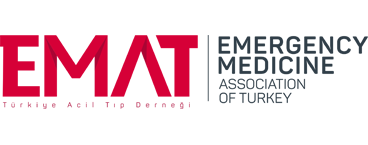A rare case report of catecholamine‑induced takotsubo in a patient with anaphylaxis shock due to amoxicillin–clavulanate
Thang Quoc Le1 , Thanh Huu Nguyen1
, Thanh Huu Nguyen1 , Anh Duc Vu2
, Anh Duc Vu2 , Hai Dang Pham2
, Hai Dang Pham2
1College of Health Sciences, VinUniversity, Ha Noi, Vietnam
2Medical Intensive Care Unit, 108 Military Central Hospital, Ha Noi, Vietnam
Keywords: Anaphylaxis, antibiotics, catecholamine, takotsubo
Abstract
Takotsubo syndrome (TTS), also known as stress cardiomyopathy, is a life threatening condition characterized by transient left ventricular dysfunction with nonischemic abnormalities. This syndrome in scenarios of anaphylactic shock is quite rare, with only a few cases reported. Early diagnosis and treatment are crucial. We presented a rare case of 58 year old woman presented to our hospital due to an anaphylactic shock. The patient was stable and in the de escalation dose of adrenaline (0.05 µg/ kg/h). Twenty two hours from exposure, the patient experienced pulmonary edema that required intubation, both adrenaline and dobutamine to maintain blood pressure. Echocardiography revealed a reduced ejection fraction of 35%. Subsequent coronary angiography showed no signs of coronary obstruction and left ventriculography provided typical apical ballooning and hyperkinesia in the basal region, highly suggesting TTS. The patient was successfully treated with inotrope and vasopressor and was discharged in stable condition after 7 days and improved normal heart function after 4 weeks. This case demonstrates the delayed onset of adrenaline induced takotsubo complicated with pulmonary edema in a patient with anaphylactic shock due to antibiotics despite a de escalation dose of adrenaline. Regardless of the duration of the event or the optimal epinephrine dosage in patients with anaphylactic shock, physicians should be aware of the risk of TTS.
How to cite this article: Le TQ, Nguyen TH, Vu AD, Pham HD. Arare case report of catecholamine-induced takotsubo in a patient with anaphylaxis shock due to amoxicillin–clavulanate. Turk J Emerg Med 2025;25:152-5.
The authors certify that they have obtained all appropriate patient consent forms. In the form, the patient has given her consent for her images and other clinical information to be reported in the journal. The patient understands that her name and initials will not be published and due efforts will be made to conceal her identity, but anonymity cannot be guaranteed.
LQT: Conceptualization (Equal); writing – Original draft (lead); formal analysis (Equal); writing – Review and editing (equal). NHT: Conceptualization (Lead); writing – Original draft (Equal); formal analysis (lead); writing – Review and editing (equal). VAD: Methodology (Equal); writing – Review, and editing (equal). PDH: Conceptualization (supporting); Writing – Review, and editing (Lead).
None Declared.
None.

